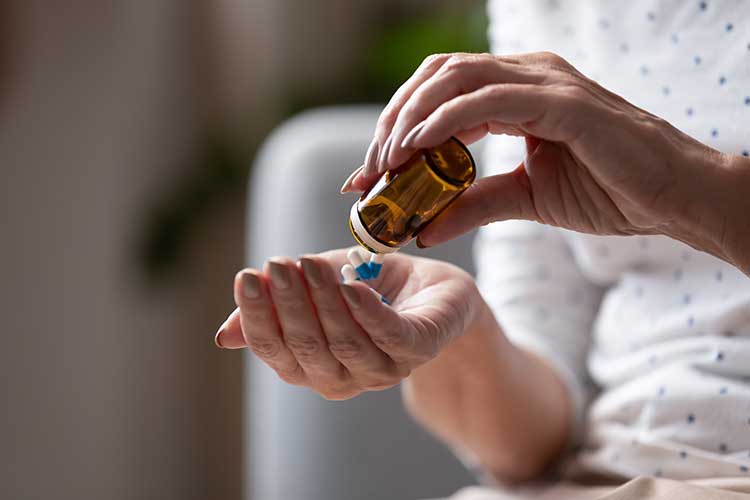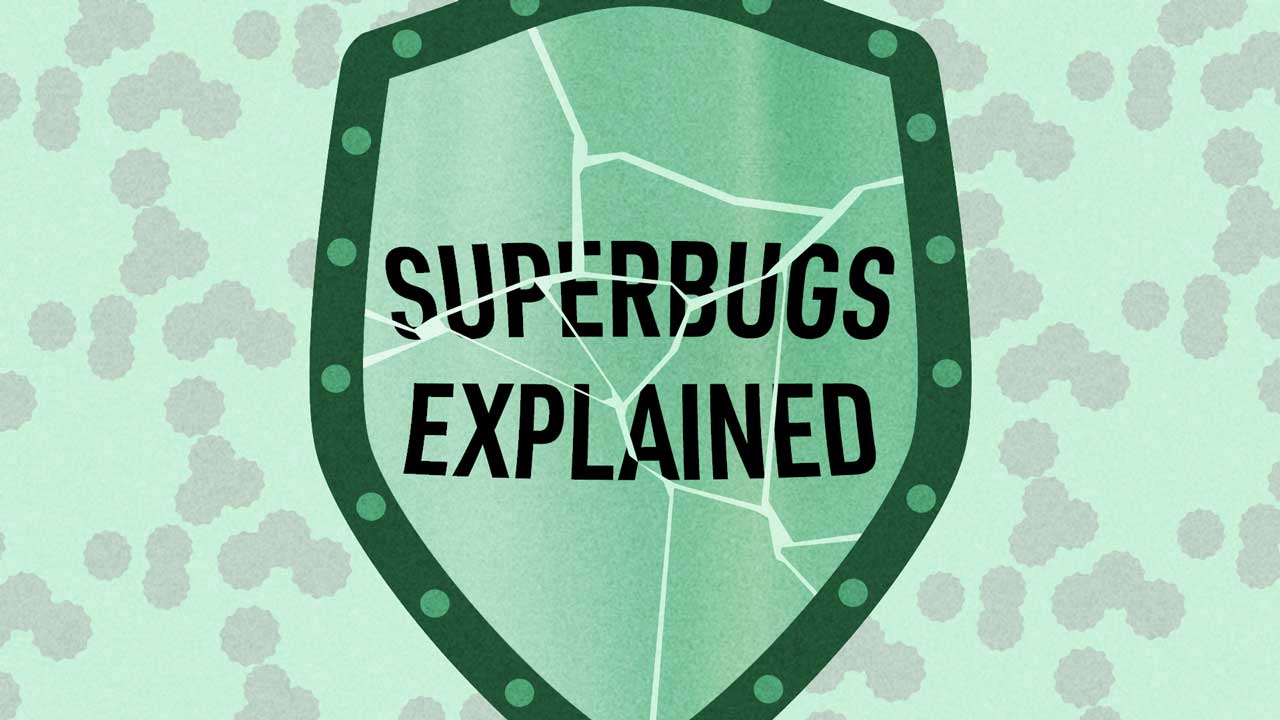What is a Superbug?
A superbug is a microorganism that has developed antimicrobial resistance (AMR) to multiple antimicrobials. After being exposed to certain antimicrobials, superbugs have adapted and can no longer be killed by these treatments (Cleveland Clinic 2024).
The proper terminology for this is a multi-resistant organism (MRO); the term ‘superbug’ has been popularised by the media.
The severity of a superbug depends on the number of different antimicrobials the microorganism is resistant to, with some being resistant to one or two and others being resistant to multiple (IMB 2017).
In 2016, a case of an infection caused by a ‘pan-resistant’ (resistant to all antibiotics) strain of bacteria was detected in the United States for the first time, resulting in the death of a woman in her 70s. According to current research, Australia should anticipate the event of ‘pan-resistant’ bacteria in the near future (Bowden 2017).
It’s estimated that antimicrobial resistance contributes to around 4.95 million deaths worldwide every year (WHO 2023). A review by the UK government on antimicrobial resistance foresees this number rising to 10 million by 2050 (IMB 2017).
A major risk of superbugs is that if they spread, we could reach the point where it becomes too dangerous to perform routine surgeries such as caesarean births and transplants due to the risks presented by infection (IMB 2017).
What Causes Superbugs?

The major cause of antimicrobial resistance is the overuse and misuse of antimicrobials (WHO 2023).
Almost all species of bacteria have developed some degree of AMR since the invention of antibiotics in the 1930s, but most are still sensitive to numerous classes of agents (Bowden 2017).
However, multi-resistant strains are only susceptible to a very limited range of antibiotics (Bowden 2017).
As antibiotics often cause unwanted side effects, it is not uncommon to be advised to change antibiotics more than once in the treatment of severe infections. If a patient acquires a multi-resistant strain, it is only a matter of time before treatment options become limited (Bowden 2017).
Research has shown that just one course of antibiotics can affect the level of antimicrobial-resistant microorganisms in a person’s body. It can also contribute to the wider issue of antimicrobial-resistant disease in the community (ABC News 2017).
Antibiotic-resistant strains are not exclusive to developing countries. Brazil, Greece and South Africa have major problems with superbugs (IMB 2017).
There is a strong correlation between countries with high incidents of antibiotic-resistant strains and countries where antibiotics are available over the counter (IMB 2017).
Traditionally, hospitals have been known to be the breeding site of the most serious infections, however, superbug infections are developing outside of hospital environments at an increasing rate (IMB 2017).
In the relatively recent event of global travel, the spread is only being exacerbated.
Keep in mind that while antibiotic resistance is a catalyst for superbug growth, a germ's impact is not only dependent on whether an effective antibiotic is available but also on the organism's virulence, the volume of exposure the person is exposed to, and the health of their immune system (Bowden 2017).
Superbugs in Australia
Cases in which people die from antibiotic-resistant infections are still relatively rare, particularly in Australia where antibiotics are not available over the counter (IMB 2017). This aside, it should still be considered a serious threat.
Clinical microbiologist Deborah Williamson argues along with other infectious disease experts that there is a current ‘black hole in surveillance’ in antibiotic resistance in Australia (Branley & Lloyd 2019).
Some of the microorganisms that have been identified as being of primary concern in Australia include:
- Methicillin-resistant Staphylococcus aureus (MRSA)
- Vancomycin-resistant enterococci (VRE)
- Linezolid-resistant enterococci (LRE) and Linezolid-resistant Vancomycin-resistant enterococci (LRVRE)
- Carbapenemase-producing Enterobacterales (CPE): a group of bacteria that appear to be resistant to most antibiotics, including carbapenems, which are a ‘last resort’ antibiotic:
- The number of cases of infections resistant to carbapenems has risen by more than 14%
- Without treatment, roughly 40% of patients suffer death and many endure severe side effects
- Candida auris, a yeast that is proving to be resistant to several antifungals and is thought to have come to Australia from overseas.
(Branley & Lloyd 2019, Bowden 2017; ACSQHC 2021; SA Health 2023)

How Can We Curb the Growth of Superbugs?
The following efforts are being trialled or have been suggested with the intention of stopping superbugs:
- Stricter prescribing laws around antibiotics would be a step toward limiting the impact of superbugs, along with tougher control around agricultural use of antibiotics.
- Researchers are looking for new antibiotics or enhanced versions of old ones already in use.
- A focus on diagnostic improvements in order to respond faster to an infection, getting a clearer picture of its resistance profile and therefore allowing it to be targeted earlier.
(IMB 2017)
A vital way to protect oneself from superbugs is to follow recommended infection control procedures, such as:
- Regularly washing hands with warm water and soap
- Drying hands thoroughly after washing them
- Avoiding coughing or sneezing into hands
- Washing hands well after handling any raw animal products
- Washing hands well after coming into contact with someone who is sick
- Avoiding sharing personal items such as razors or towels
- Practicing safe sex to prevent antibiotic-resistant gonorrhoea
- Cooking foods to safe temperatures.
(Johnson & Seladi-Schulman 2019)

Test Your Knowledge
Question 1 of 3
What percentage of patients typically die without treatment for infections caused by carbapenem-resistant bacteria?
Topics
Further your knowledge
References
- ABC News 2017, ‘Superbugs: What are They and How are They Treated?’, ABC News, 28 February, viewed 28 January 2025, https://www.abc.net.au/news/health/2017-02-28/superbugs-what-are-they-and-how-are-they-treated/8310556
- Australian Commission on Safety and Quality in Health Care 2021, 2021 Recommendations for the Control of Carbapenemase-Producing Enterobacterales (2021 CPE Guide), Australian Government, viewed 28 January 2025, https://www.safetyandquality.gov.au/publications-and-resources/resource-library/2021-recommendations-control-carbapenemase-producing-enterobacterales-2021-cpe-guide
- Branley, A & Lloyd, M 2019, ‘Antibiotic-Resistant Superbugs on the Rise and Leaving Patients with Life-Long Illness’, ABC News, 5 August, viewed 28 January 2025, https://www.abc.net.au/news/2019-08-05/concerns-over-the-rise-of-resistant-superbugs/11377930
- Bowden, F 2017, ‘How Common are Superbugs in Australia, and What do we do When the Antibiotics Don’t Work?’, The Conversation, 18 July, viewed 28 January 2025, https://theconversation.com/how-common-are-superbugs-in-australia-and-what-do-we-do-when-the-antibiotics-dont-work-80318
- Cleveland Clinic 2024, Superbug, Cleveland Clinic, viewed 28 January 2025, https://my.clevelandclinic.org/health/diseases/superbug
- Institute for Molecular Bioscience 2017, Explainer: What is a Superbug and Why Should We be Worried?, The University of Queensland Australia, viewed 28 January 2025, https://imb.uq.edu.au/article/2017/11/explainer-what-superbug-and-why-should-we-be-worried
- Johnson, J & Seladi-Schulman, J 2019, ‘Superbugs: Everything You Need to Know’, Medical News Today, 21 November, viewed 28 January 2025, https://www.medicalnewstoday.com/articles/327093
- SA Health 2023, Multidrug-Resistant Organisms (MRO), Government of South Australia, viewed 28 January 2025, https://www.sahealth.sa.gov.au/wps/wcm/connect/public+content/sa+health+internet/clinical+resources/clinical+programs+and+practice+guidelines/infection+and+injury+management/healthcare+associated+infections/multidrug-resistant+organisms+mro/multidrug-resistant+organisms+mro
- World Health Organisation 2023, Antimicrobial Resistance, WHO, viewed 28 January 2025, https://www.who.int/news-room/fact-sheets/detail/antimicrobial-resistance
- Thompson, K 2023, ‘Vaccines Could Avert Half a Million Deaths Associated with Anti-Microbial Resistance a Year’, WHO News, 28 July, viewed 28 January 2025, https://www.who.int/news/item/28-07-2023-vaccines-could-avert-half-a-million-deaths-associated-with-anti-microbial-resistance-a-year
 New
New 

